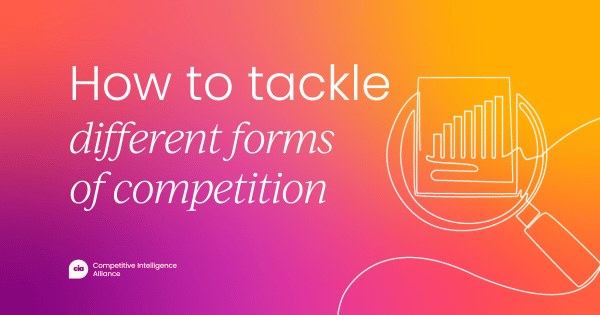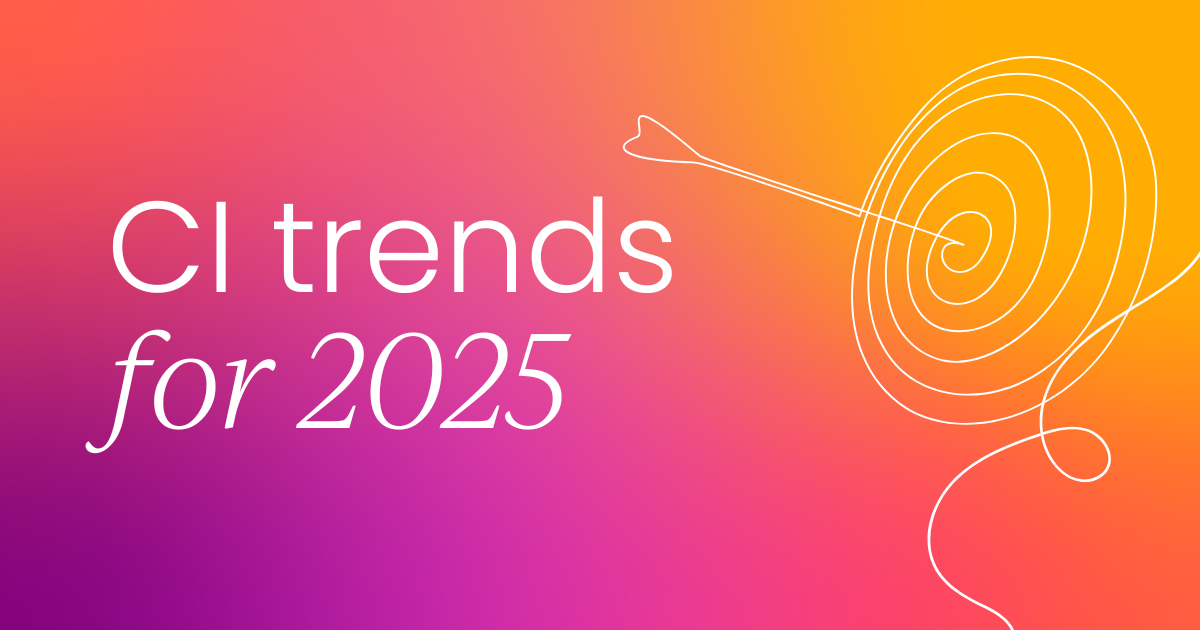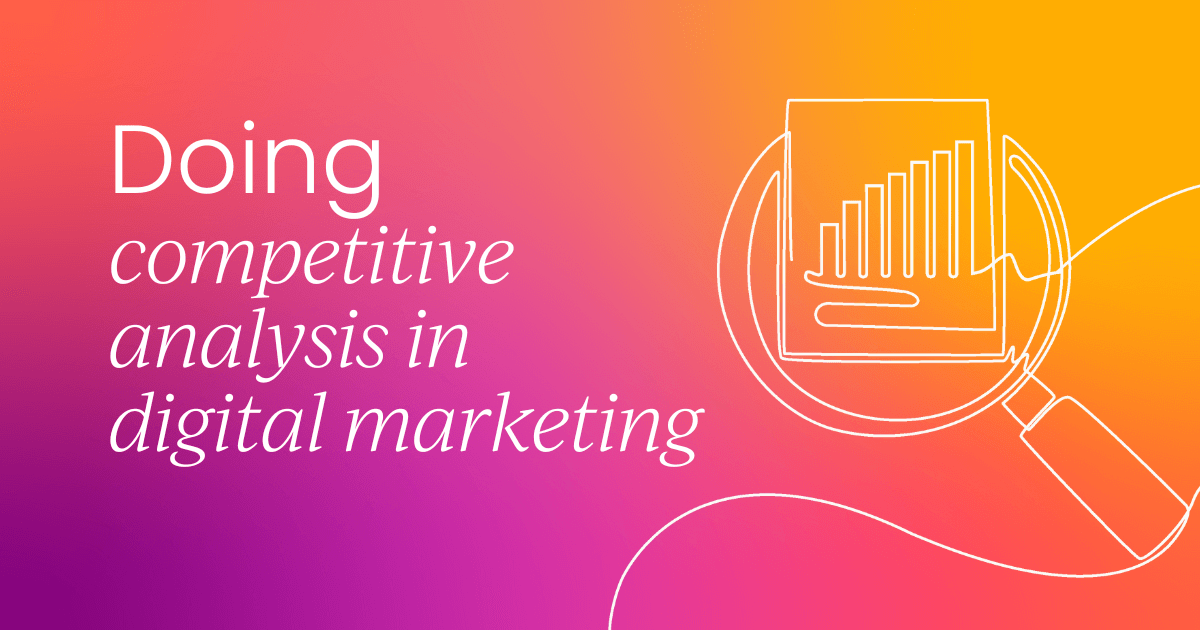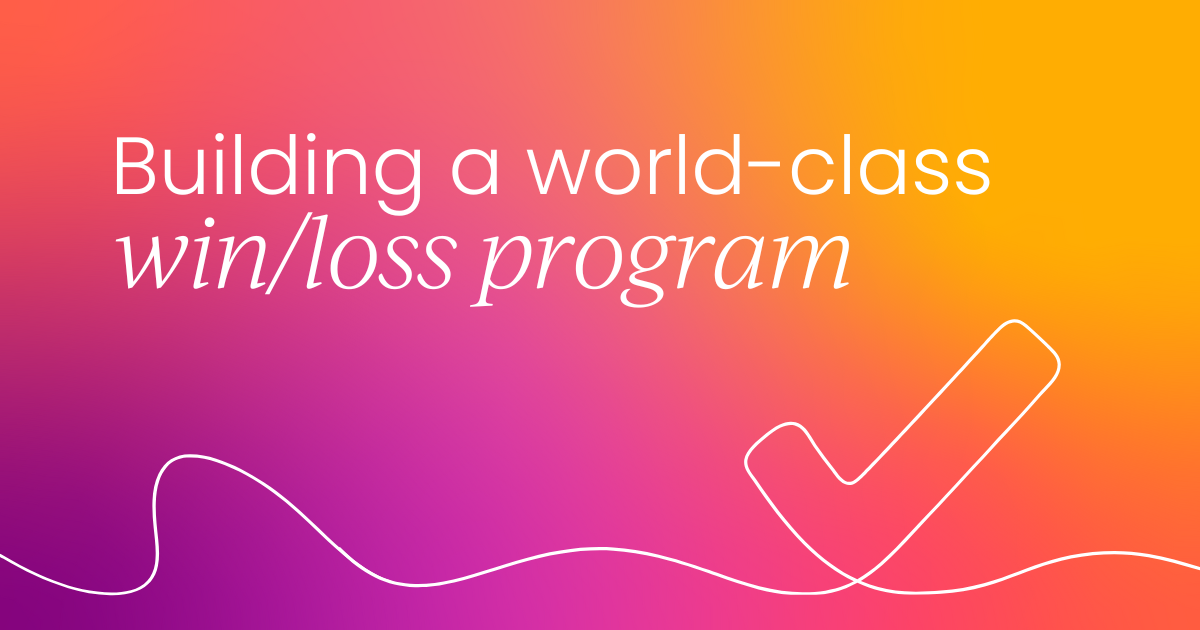This article is based on Tammy’s talk from our Competitive Intelligence Summit.
Competitive intelligence doesn’t just live in press releases, websites, or industry news. Those are resources everyone has access to, as they’re commoditized.
What gives us a true competitive edge is the unique, hyper-local knowledge our employees carry with them every day.
I want to take you on a journey that challenges the way you think about gathering, sharing, and using competitive intelligence.
I’ll share seven strategies that can radically simplify the process, making it scalable, actionable, and transformative for your business.
The power hidden inside your workforce
Let’s start with a simple question: are the sources of competitive intelligence you rely on truly unique and valuable?
Traditional channels like social media feeds or product announcements give you information, yes, but they don’t give you an edge. What does? The whispers employees hear on the ground.
The firsthand stories they pick up in customer conversations. The details they notice long before official news hits the headlines.
In the 2023 State of Competitive Intelligence Report, 63% of people said competitive intelligence from employees is extremely valuable. Another 29% ranked it as valuable. That makes employees the number one most valuable source of competitive intel.
Think about that: the people you work alongside every single day hold the key to unlocking your competitive advantage.
But here’s the problem: gathering intelligence from employees has always been difficult. They’re busy, they forget, or they don’t see the value in sharing.
Meanwhile, competitive intelligence professionals are left piecing fragments together manually with surveys, emails, Slack threads, CRM notes. It’s slow, it’s messy, and it doesn’t scale.
The result is that companies without a strategy to tap into employee-driven competitive intelligence fall behind, often without realizing it. They struggle with longer sales cycles, lost deals, and lower win rates, all while their competitors pull ahead.
The gap between companies that harness employee-driven CI and those that don’t is widening.
The good news is that there’s a solution. By embracing radical simplicity, organizations can remove friction and turn employees’ knowledge into a steady stream of usable, actionable intelligence.
That’s where my seven strategies come in.

Strategy 1: Define it
Clarity is power. The first strategy is about being crystal clear and intentional in what you’re asking employees to share.
Too often, companies settle for vague requests: “Tell us about competitors”, or “Share what you know”. But what does that mean? Does it mean pricing details, marketing campaigns, product features, or customer reactions? Without definition, employees are left guessing.
Take competitive pricing as an example. Instead of vaguely asking for “pricing intel,” define exactly what you mean. You want the competitor’s name, the price, the issue date, the terms, and, most importantly, how that compares to your own pricing and what impact it could have on your business.
This principle applies across the board: competitor product intelligence, competitor marketing tactics, competitor sales activities. Define each type of intel with specificity.
When employees know exactly what they’re aiming for, they deliver higher-quality information. The walls of uncertainty crumble. You’ve provided a precise target, and in doing so, you’ve laid the foundation for consistent, actionable intelligence.
Defining it is about embracing the art of specificity. It’s not glamorous work, but it’s what transforms competitive intelligence from scattered fragments into a coherent picture.
Strategy 2: Score it
Once you’ve defined competitive intelligence, the next step is to score it.
Employees often provide qualitative anecdotes: “The competitor’s price seemed better” or “The customer wasn’t happy with our terms”. Valuable, but hard to analyze at scale.
That’s where the four-point scale comes in. Why four? Because three- or five-point scales lead to clustering in the middle. People default to the safe, neutral choice. A four-point scale removes that middle option. It forces employees to go above or below the dividing line.
For pricing intel, an employee might select:
- Worse
- Equivalent
- Better
- Significantly better
For business impact, they might select:
- Not yet lost
- Possibly lost
- Probably lost
- Definitely lost
Notice that the words in the boxes can change. What matters is the structure of four options that push employees to make a choice.
Now imagine what happens when these individual responses are aggregated. You can look at a month’s worth of data and see: this pricing issue arose 123 times, and 83% of the time, business was likely lost or lost. That’s not anecdotal. That’s quantitative.
That’s the kind of insight executives can act on and field reps can use to sharpen their tactics in the moment.
Scoring transforms scattered stories into patterns. It equips decision-makers at every level with data they can trust.

Strategy 3: Time it
Even with definitions and scoring in place, time remains the enemy. Employees don’t have 20 minutes to craft detailed reports. If sharing intel is a burden, they won’t do it.
That’s why timing matters. The process must take less than a minute.
Here’s how it looks in practice. Instead of typing long narratives, an employee taps to select the competitor’s name, the date, the pricing comparison, and the business impact. Done. Four taps, under 60 seconds, and they’re back to their work.
The first two strategies, defining and scoring, set the stage for this kind of efficiency. Because you’ve been precise about what’s needed, the employee doesn’t waste time figuring it out. And because you’ve structured the responses, they don’t need to explain at length.
When you respect employees’ time like this, they respect the process in return. The burden disappears, and participation skyrockets. Information flows freely, because you’ve made it effortless to contribute.
Strategy 4: Enact it
Now that we’ve made intel fast to share, we need to make it accessible wherever employees already work.
Think about it: if an employee has to leave Salesforce to go to a separate tool, or leave Teams to log into another system, you’ve added friction. Every extra step reduces participation.
Instead, meet them where they are. If they’re working in Teams, let them type “@Groopit” to share intel without leaving the conversation. If they’re in Slack, a simple “/groopit” command brings up the workflow right there. If they’re updating call notes in Salesforce, the same workflow is embedded into the account record.
This matters because competitive intelligence definitions, when connected across platforms, eliminate unnecessary effort. A salesperson can share in the system they use every day, and the information flows into the broader intelligence ecosystem automatically.
The impact is profound: more employees share, more frequently, with less friction. And the competitive advantage grows exponentially with every new contribution.

Strategy 5: Share it
One of the biggest mistakes companies make is letting competitive intelligence disappear into a black hole. Employees share, but the insights vanish into spreadsheets, emails, or Slack threads that no one sees when they need them most.
This is a recipe for wasted effort. If insights aren’t easy to consume, they’re not going to be used. And if they’re not used, they lose their value.
The key is to make competitive intelligence automatically shareable in a format that’s lightweight and consumable. Don’t bury it in lengthy reports. Don’t let it sit idle, waiting for someone to analyze it months later.
Deliver it in its raw form (as a live data feed) into the systems people already check.
Imagine a pricing and licensing channel that automatically receives every piece of CI related to competitor pricing. Or a sales enablement channel that gets all intel on competitor strengths.
Suddenly, insights aren’t buried, they’re alive, in front of the people who need them, exactly when they need them.
This kind of transparency creates a culture of continuous learning. Employees absorb intel in real time. They think about it, engage with it, and incorporate it into decisions.
Instead of hoarding knowledge, the organization becomes one that acts rationally and confidently with a clear view of the competitive landscape.
Strategy 6: Recognize it
Sharing intelligence takes effort, even when it’s simple. If you want employees to do it consistently, you must recognize their contributions.
Recognition doesn’t have to be complicated or time-consuming. Some companies send out a weekly highlight on Slack or Teams, celebrating who shared what and the outcome that followed. It takes five minutes, but the impact is enormous.
Leaders play an important role here. By connecting the dots between intelligence shared and results achieved, they show employees that their contributions matter. When someone sees their name associated with a win, they take pride in it. They feel ownership. And they’re far more likely to keep sharing.
This is how you build a culture where competitive intelligence isn’t just another task, it’s something people are motivated and rewarded to do.

Strategy 7: Model it
Finally, we must model the behavior we want to see.
That means identifying champions: people who are already engaged and willing to lead by example. Champions share intel, and in doing so, they demonstrate the process for others. Their actions create a ripple effect across the company.
When employees see respected peers contributing, they’re inspired to do the same. Over time, the behavior spreads. What starts as a handful of champions becomes an organization-wide habit.
And that’s how competitive intelligence sharing goes from being a program to becoming part of the culture.
How Groopit makes it simple
This is the philosophy behind Groopit. We’ve created an entirely new category of enterprise software called crowdsolving, designed to make competitive intelligence sharing radically simple.
Here’s how it works:
Customizable workflows define exactly what employees share, whether competitor strengths, pricing terms, or marketing tactics. These definitions are based on science, designed to yield high-quality, quantitative data.
Employees share intel directly from Teams, Slack, Salesforce, mobile, or web. No switching systems, no extra steps. A sales development rep can add competitor intel right in Teams.
An account executive can do it while entering call notes in Salesforce. A solutions engineer can share from their resource hub. Even on the go, mobile apps make sharing easy.
Shared data flows instantly into the right channels, whether that’s a Slack pricing feed, a Salesforce dashboard, Tableau, or Power BI. Everyone sees patterns, anomalies, and emerging themes at a glance.
Program managers can adapt instantly. If a new competitor or new product emerges, they can spin up a new workflow from one of 30 templates, or create one from scratch.
he moment it’s activated, it propagates across every system. Employees know exactly what to share, and they can do it without leaving their existing workflow.
The result is that companies finally have the ability to gather high-quality, quantitative, consistent CI at scale, something that’s been nearly impossible with spreadsheets, CRMs, or scattered email threads.
CI leaders can search, filter, flag, and drill into the data. They can see when a competitor response is in development, or when a new trend is emerging.
They gain both precision and agility. And because intel is shared broadly, employees across the organization can use it immediately to win deals and shape strategy.

The competitive edge
When you define, score, time, enact, share, recognize, and model competitive intelligence, you create an environment where employee knowledge flows freely, leaders act on real-time insights, and organizations move faster than competitors.
At Groopit, our goal is to simplify this process to just a few taps, so companies can stop drowning in commoditized data and start building real, actionable intelligence.
In today’s economy, where the margin between winning and losing is razor thin, this kind of advantage matters. It’s the difference between longer sales cycles and faster closes, between lost deals and higher win rates, between falling behind and pulling ahead.
The untapped gold mine is already within your organization. It’s time to unlock it.









.png?v=89c4a5be17)